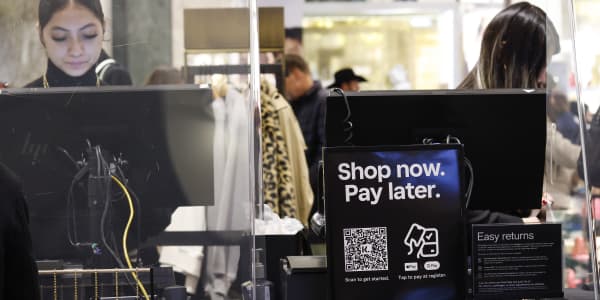Generic stores and static brands don't quite cut it anymore with experience-hungry millennials who want to show the world they're unique.
Dwindling foot traffic in malls and competition on shelves has forced companies to rethink how they reach consumers. Pop-up shops offer both a testing ground and a marketing tool, making them a favorite, especially during the holidays.
Yankee Candle's version in New York is a stark departure from its classic mall store layout. Inside, visitors explore various settings: a forest, a poolside lounge, a field of giant roses and a sideways room that could be a scene in "Alice in Wonderland." In another room, visitors can use their fingers to guide koi fish on a screen.
Traditional candles comprise just a corner of the space, while personalized jars are the centerpiece of the store. Visitors can choose an image, add words, select a fragrance and have it printed on a candle. Brands WoodWick and Chesapeake Bay are also featured, both of which Yankee's parent company, Newell Brands, acquired this year.
Four New York-themed scents are unique to the store. Exclusive products are essentially an unwritten rule for pop-up shops.
"We really want to show the brands to customers in a different way, so they think about them in the way they always have and in a new way they never have. This experience absolutely gives them the opportunity to do that," said Hope Margala, Newell Brands' CEO of home fragrance.
Brands across the spectrum have played with the concept. Luxury outfits Yves Saint Laurent and Valentino, Pringles and Pop-Tart maker Kellogg, consumer goods giant Unilever and streaming service Netflix are among those that have opened pop-up shops this year.
Traditional retailers are pairing up with digital brands to bring them into brick and mortar. Calvin Klein and Amazon, Topshop and Kylie Jenner, Domino and Home Depot are among the matchups.
Pop-up shops give retailers a chance to experiment with new formats and gain consumer insights. They help consumer packaged goods companies shape the connection shoppers have with their brands, something they normally relinquish to the store.
Open from mere days to multiple months, pop-up shops create a sense of urgency, and lure in shoppers with exclusive items. It's all about the buzz. They're usually designed for art rather than function and include spots that beg to be shared on social media to spark chatter.
"The No. 1 thing we share with brands is this is the new (return on investment). So instead of putting marketing dollars in digital ads or putting separate marketing money in a retail shop, you're actually merging them together to create an experience that will drive sales," said Joy Fan, chief creative officer of Storefront, a search engine that helps companies find spots for pop-up shops.
Newell Brands declined to say how much it spent on its holiday setup.
On average, operating a space under 1,000 square feet in Nolita, a New York neighborhood near SoHo, can cost between $35,000 and $40,000 a month, according to Fan. That number varies based on location and size, she said, with a 10,000-square-foot space costing up to $60,000 a month in rent alone.
Sales can help offset the expenses, Fan added. The information gained from consumers can also justify the price tag. Brands can study shoppers' product preferences and collect information like email addresses to connect with them after the store closes.
Some companies are searching for other ways to create occasions that will help their products stand out. Procter & Gamble brought a Charmin-branded van containing a private bathroom to New York this summer. There's talk the company could bring it back during the holiday rush.
As for Yankee Candle, it's too early to say whether the pop-up shop will return next year or appear in another city after the current store closes days after the new year.
Margala said she hopes to open another, but she has to see how this one turns out. Her team will measure marketing tracking figures and sales numbers, among other metrics.
"I think part of this is just seeing people interact with the brand and the affinity they'll have for the brands," she said. "That's absolutely how we judge that."




